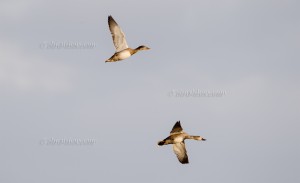 Already several sites for nature protection with excellent birding ops in Brandenburg has been presented. One of these sites is a protected nature area in the Havellaendisches Luch or the Guelper See. If you have spare time between two tourist attractions in Germany´s sprawling capital Berlin you might be interested as a birdwatcher to know, where you can find good places to enjoy fresh air and relax with birding for typical European birds. Berlin, the capital of Germany is a top tourist destination and easy to reach by air or car. So the city is a great place to combine a city trip with a birding excursion.
Already several sites for nature protection with excellent birding ops in Brandenburg has been presented. One of these sites is a protected nature area in the Havellaendisches Luch or the Guelper See. If you have spare time between two tourist attractions in Germany´s sprawling capital Berlin you might be interested as a birdwatcher to know, where you can find good places to enjoy fresh air and relax with birding for typical European birds. Berlin, the capital of Germany is a top tourist destination and easy to reach by air or car. So the city is a great place to combine a city trip with a birding excursion.
One of these sites is a National Park in Oder valley (Polish: Odra). The Oder is a river in Central Europe which rises in the Czech Republic and ultimately flows into the Szczecin Lagoon of the Baltic Sea. The National Park Lower Oder protects a flood plain, the last still intact in large parts of the estuary of Central Europe with its adjacent slopes, mixed deciduous forests and dry grasslands.
April demonstrated spring time with pleasant temperatures, a pleasant southern wind and usually sunshine. The first weekend provided a significant boost in migratory birds. Especially thrushes – including the first Ring Ouzels (Turdus torquatus) were increasingly encountered on their traditional resting places. The first Sedge Warbler (Acrocephalus schoenobaenus) and Savi’s Warbler (Locustella luscinioides) were heard.
After an excursion to the Welseaue at Passow on the western end of Schwedt looking for Common Snipe (Gallinago gallinago) and Jack Snipe (Lymnocryptes minimus) my traces led me to the river Oder. Having refueled with gasoline and a Breakfast from a gas station I decided going to Criewener polder south of Schwedt. The car I parked just in front the bridge on the western side channel of the Oder. I grabbed tripod, spotting scope and the Canon 4.0 / 400 DO from the car. So I walked up to a not far distant bank with an impressive view over the whole polder with riparian woods and wide meadows. They were still flooded and quite wet in wide parts. But the concrete slab paths through the polders were indeed largely dried. In between shallow water bodies existed, which were extensively used especially by the ducks. So something like 260 individuals of Gadwalls (Anas strepera), many (900?) Northern Pintails (Anas acuta), at least 2 Garganeys (Anas querquedula), approx. 100 Northern Shoveler (Anas clypeata), some 40 Common Teals (Anas crecca), 8 Smew (Mergellus albellus), good 50 Eurasian Wigeon (Anas penelope), 2 Tufted Ducks (Aythya fuligula) and a pair of Common Goldeneye (Bucephala clangula) could be seen. The normally omnipresent Mallards (Anas platyrhynchos) were almost the least abundant duck species. Other reports talked of Red-necked Grebe (Podiceps grisegena) and Eared Grebe (Podiceps nigricollis). But these birds could not be detected.
Also on waders the true masses seem to arrive a few days later in the region. The statistics talk of highest numbers from mid-April on. Only the Northern Lapwing (Vanellus vanellus) were well represented. Only a few raptors could be seen, with Eurasian Marsh Harriers (Circus aeruginosus) and a great adult White-tailed Eagle (Haliaeetus albicilla) sitting with drooping wings on a broken tree trunk in the middle of the floodplain as the most remarkable.
Overall, the results for this 2-day trip to the Oder valley were really remarkable. In total, I was able to observe 63 species, which, given the latecomers outstanding (peak of migration is only 1 month later), is surprisingly good.
An excursion to the area in the North-East of Berlin is always rewarding. During migration it is possible to see thousands of Common Crane (Grus grus). Other possible species to be observed during a trip to the flooded plains from the dykes are in late fall or winter Eurasian Marsh-Harrier (Circus aeruginosus), Northern Harrier (Circus cyaneus) and Rough-legged Hawk (Buteo lagopus), During the trips encounters with Beaver and Eurasian Otter are possible, too.
There are already many airlines which use the Airport of Berlin. An alternative is to take a flight to Frankfurt/ Main, the international hub for Germany, and drive with a rented car in roughly half a day to Berlin and enjoy the landscape while almost flying over the autobahn.
Access to the reserve via the Criewener Polder is not difficult. There are other places in the nearer surroundings where access is a bit tricky. Please contact via the contact form if I can give further directions or even guide you!